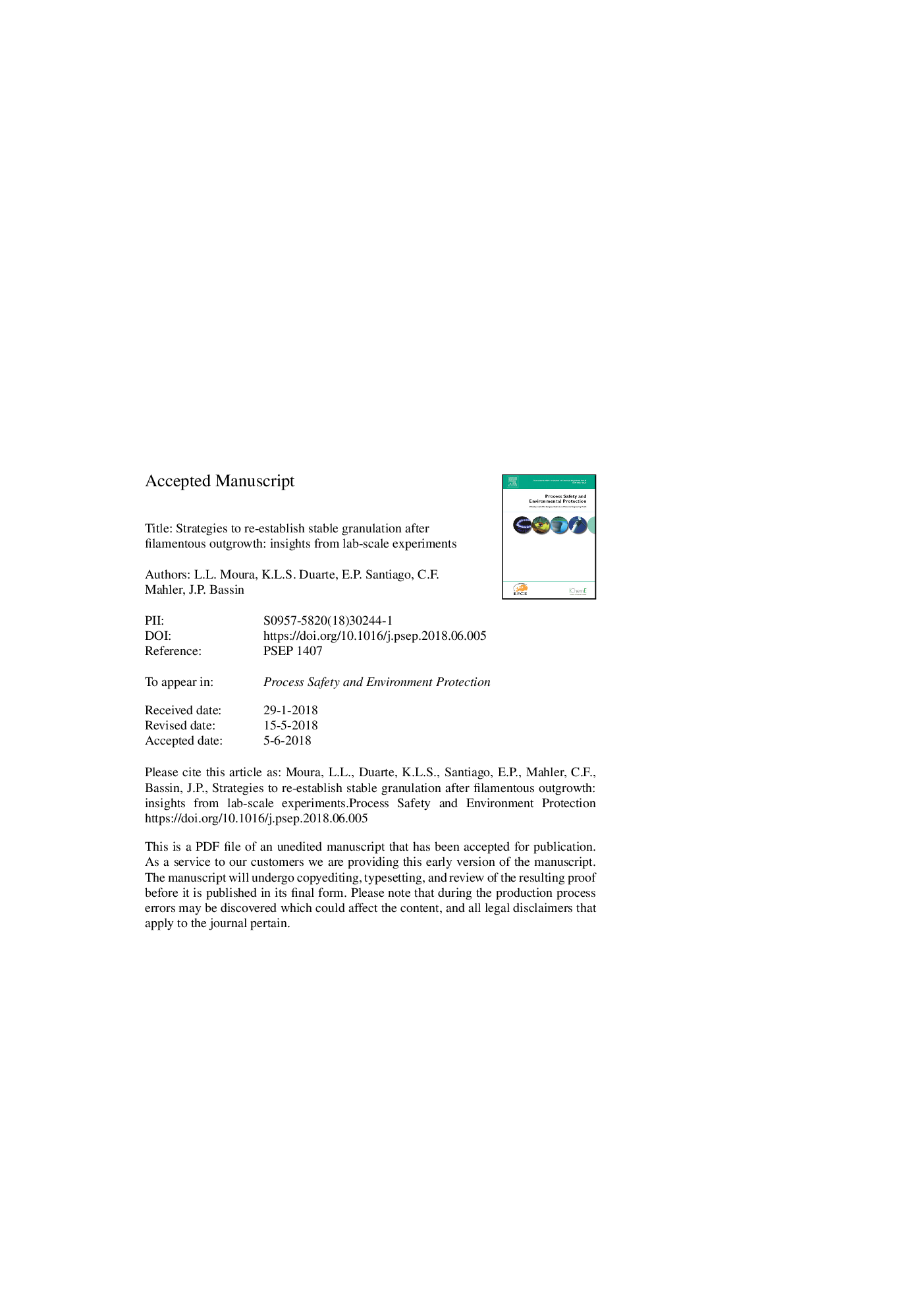| Article ID | Journal | Published Year | Pages | File Type |
|---|---|---|---|---|
| 6974019 | Process Safety and Environmental Protection | 2018 | 42 Pages |
Abstract
Aerobic granular sludge (AGS) is a promising technology for wastewater treatment. However, maintaining the granular biomass stability is not trivial. During the long-term operation of AGS systems, we observed that uncontrolled sludge retention time led to the appearance of substantially large and fluffy granules characterized by a dark anaerobic inner core. Such conditions favoured the proliferation of filamentous bacteria and deterioration of AGS properties. Consequently, granules disintegration became inevitable. We decided to assess two operational strategies to supress filamentous overgrowth and recover the granular biomass stability. Strategy 1 involved the enhancement of shear stress by increasing the aeration intensity (from 1.34 to 1.87 cm sâ1), while strategy 2 relied on the combination of enhanced aeration and iron (10 mg Lâ1) addition. The implementation of strategy 1 contributed to decrease the average diameter of AGS (4.7-4.1 mm) and sludge volume index (SVI) (300-110 mL gâ1). Nevertheless, filamentous bacteria remained intact. Conversely, prolonged shear stress combined with iron supplementation (strategy 2) led to significant improvements in the physical characteristics of the granules. Very small particles acting as precursors of mature AGS were observed while big-size granules (>4 mm) were no longer detected. Moreover, filamentous overgrowth was controlled and the growth of new granules was stimulated. No adverse effect on the conversion processes (COD and nitrogen removal) was observed in the AGS system and stable granulation was achieved from this period onwards. To better explain the role of the implemented strategies, some hypothesis are presented and discussed.
Related Topics
Physical Sciences and Engineering
Chemical Engineering
Chemical Health and Safety
Authors
L.L. Moura, K.L.S. Duarte, E.P. Santiago, C.F. Mahler, J.P. Bassin,
